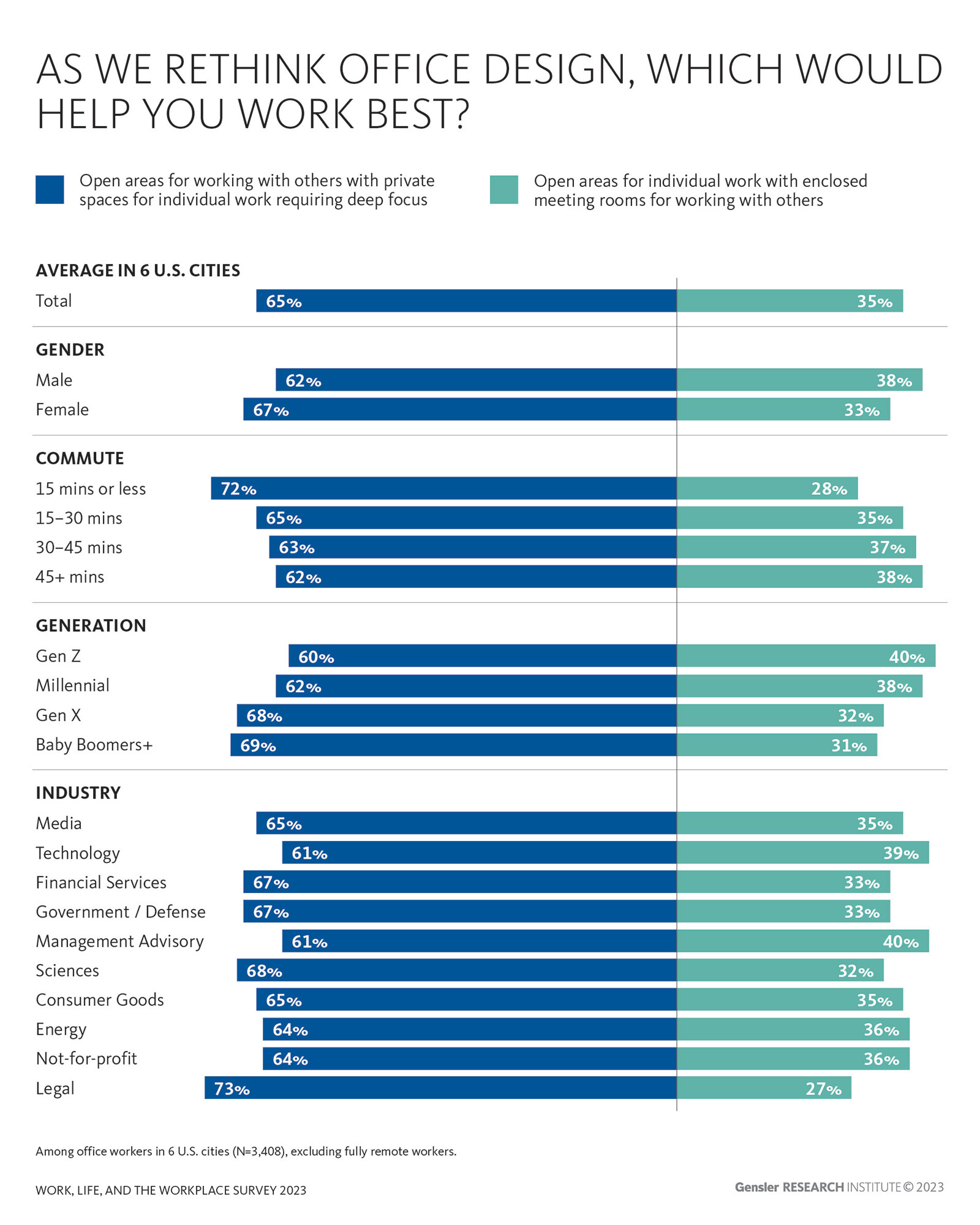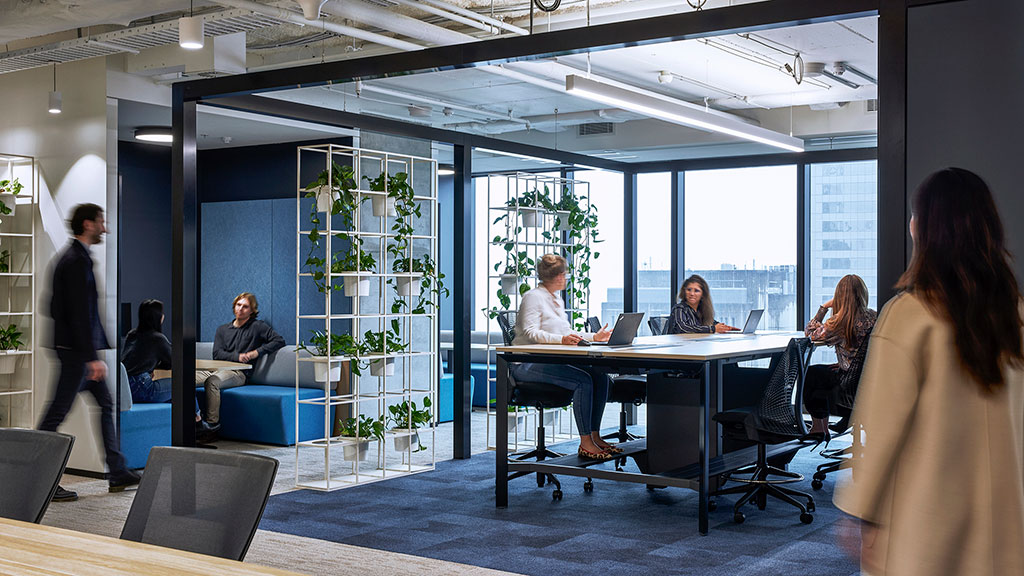Open or Private? It’s Time for a New Workplace Model.
December 14, 2023 | By Janet Pogue McLaurin
As we rethink office design for a hybrid way of working, the age-old debate of open versus private workspace has resurfaced. Since the individual workstation was introduced in the ’60s, the workplace has typically been designed as open areas for individual work, with enclosed conference rooms for office workers to meet and work with others. Over time, workstation panels were lowered or went away completely, and open areas expanded to become even more open. In the economic boom before the pandemic, companies were hiring faster than they could build space, and open plans became denser to accommodate new hires. Simultaneously, enclosed focus rooms, huddle rooms, and conference rooms were often cannibalized to pack in additional open plan workstations. Today we work differently, and we have different expectations for the office. It is time for a new workplace model.
In our latest U.S. Workplace Survey, we found that different employees’ life stages impact how and where they work, as well as the type of space they need to work best at the office. Employees who say they ideally need the office more than they are currently coming in cite reasons such as long commutes or living with young children. We also found that the work itself impacts how often employees can physically be there and how they use the office once they arrive — and it varies by industry, job role, team type, and how many time zones they work across.
So, what does this mean for the design of the workplace moving forward? We asked this very question to 4,000+ workers across 10 industries in six U.S. cities representing a cross-section of ages, living situations, commute times, roles, and worker profiles. We found a surprising answer — 65% prefer open areas for working with others with private spaces for individual work requiring deep focus.
This is the opposite of how workplaces had been typically designed in the U.S. over the last decade. However, there are subtle differences across worker profiles. A majority (67%) of women, 68% of older generations, and 72% of those with the shortest commutes prefer open areas with private spaces more than their counterparts. Gen Z workers and employees with long commutes still overwhelmingly have the same preference, but slightly below the average. Some of the largest variations are by industry, with the highest preference by office workers in Legal and lowest for Technology and Management Advisory. See below for highlights of the detailed data.

Surprisingly, 68% of respondents who currently work in private offices and 71% who currently work in shared offices said they prefer open areas for working with others. At first, we thought this may signal that it’s time to flip the current workplace model, with an emphasis on open areas for creative group work, but as we dug deeper into the data, we believe that it may indicate that privacy for uninterrupted focus work is the underlying issue and has never been a more important design consideration.
Across the U.S. and globally, “to focus on my work” is the top-ranked reason to come into the office. This is true by industry, by generation, and by demographic segment. Getting work done requires both working with others and working individually. This often cannot be compartmentalized by day of the week or by physical location — we toggle between these work modes constantly. The office must accommodate all work modes regardless of how often people are at the office, which requires designing for “degrees of openness” and creating a variety of physical work experiences. Even if an office is designed primarily for collaboration or group learning, employees may need to take phone calls, to focus on a finalizing a deliverable, and/or to reflect on an interactive work session before shifting gears to prep for the next workshop or meeting.
Just giving people choice isn’t enough. Almost 75% of respondents with no choice in where to work within the office prefer private areas for solo work and open areas for working with others compared to only 63% with choice. Those who already have choice may have more access and the ability to move between open and private spaces to work best. This highlights the need for everyone to have the freedom to choose the right work setting for the task at hand.
The future of workplace design is about finding the right balance between open and private spaces for each organization based on how they uniquely work and the composition of their workforce. As we continue to adapt to new ways of working in this hybrid era, workplaces must be tailored to the diverse needs of the people who use them. Designing the right mix of open areas and private spaces will not only provide different work experiences for employees but will create a work environment for people to do their best work. After all, designing for people is the true impact of design.
For media inquiries, email .

